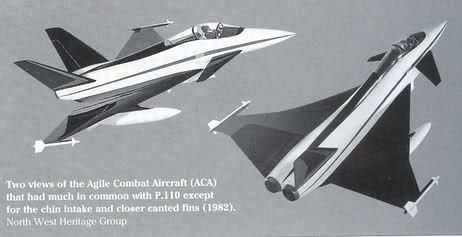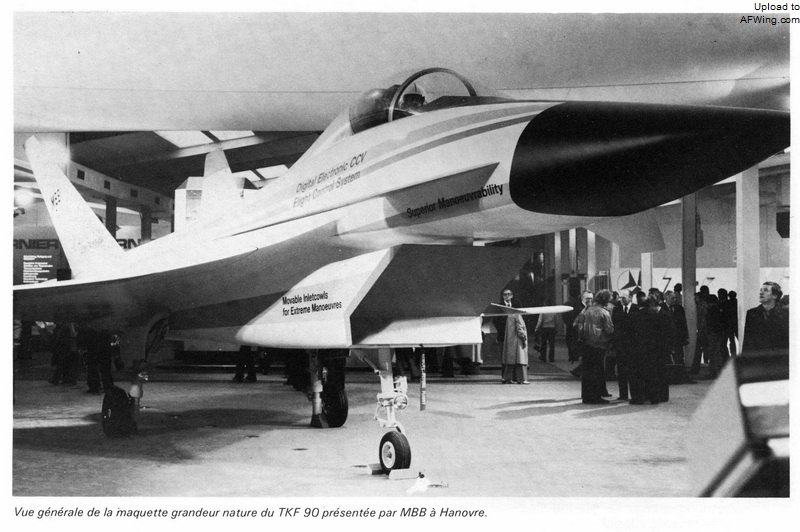Ask the insider: Eurofighter Typhoon

Copyright: Geoffrey Lee, Planefocus Ltd
Jim Smith had significant technical roles in the development of the UK’s leading military aviation programmes. From ASRAAM and Nimrod, to the JSF and Eurofighter Typhoon. We asked him about the concept behind the Eurofighter Typhoon.
What was your role on this project?
“I worked on Typhoon advising the Project Office on Mass and Performance. This involved understanding and validating data from the project, and advising both the UK and NETMA (NATO Eurofighter/Tornado Management Agency) on compliance with requirements for mass and point and mission performance. As part of this role, I was delegated UK airworthiness sign off for the Performance System for first flight of the aircraft. This was not as grand as it sounds, as for first flight the concerns are take off and lading distances, brakes and brake parachute. Moving into the Chief Scientists area, I also wrote the Mass and Performance chapters of the Chief Scientist’s review of the programme”
Was Typhoon the right concept, what is the airframe optimised for?
“The aircraft, or more properly, the system, was designed to meet a variety of requirements from the partner nations. These are classified and I will not detail them. The mission performance requirements from most partners emphasised air superiority, but there were also some air to surface missions. Point performance requirements were owned by specific Nations and included requirements on climb performance, acceleration, instantaneous and sustained turn rates and specific points required by the Nations.
I would summarise the intent as providing the best possible air superiority aircraft within weight and affordability constraints, and against the need to replace then in-service systems like Tornado F3. Acceleration in the transonic and supersonic regime was a high point, as was supersonic manoeuvrability. The aircraft is required to be able to pull significant g at a Mach number a clean F-35 cannot achieve in level flight.
From a UK perspective the aircraft was seen as primarily an air defence and air superiority fighter, but with a strong capability to transition to swing roles, where both air-to-air and air-to-surface capability can be delivered if required. The UK considered the Typhoon and F-35 to be complementary, with F-35 delivering primarily a strike role.
I think Typhoon has proven itself to be an excellent choice for the RAF, given that it is in service with proven capability, has replaced the Tornado F3, and has increasing capability in all roles as radar and weapons development and integration continue.”
What was most interesting about this project?
“The complexity of working in a 4-nation collaboration, with 4 National Industries, 4 National Governments, and Industry Joint Venture, and a NATO Management agency. Any significant review meeting would have many participants, and a focussed approach was required.
The interaction of the flight control system, the load management system and the aircraft aerodynamics, coupled with the highly unstable configuration resulted in a flight-test program which focussed on identifying any difference between predicted and observed flight behaviour. The emphasis was on validating the Aerodynamic, FCS and Loads models to ensure safety while expanding the flight envelope.
Also, as with all modern weapons systems, development takes time; this should not be a surprise.”
Is it an issue that Typhoon has inferior High Alpha performance compared to twin-tailed rivals/potential threats?
“I don’t regard this as significant. The most likely result of close-in combat these days is a mutual kill, and it does not make sense to compromise the system to favour high alpha performance. If you are in that type of combat, you have effectively lost both the BVR combat and the merge. Integration of Meteor on Eurofighter, coupled with the capabilities of ASRAAM should make this type of engagement unnecessary.”
Why did the cranked delta wing of early concepts change to the conventional delta?

“I was not involved in EF configuration design decisions. Because I was not involved, I can speculate a bit.
The essentials for EF were keeping the weight low (maximising thrust to weight) and minimising transonic and supersonic drag to achieve outstanding energy manoeuvrability. This is the ability to engage, manoeuvre, shoot, disengage, accelerate and re-engage at high energy, and the aircraft is quite exceptional in this regard. Other key factors are high instantaneous turn rate delivered through a highly unstable configuration and a smart fcs which delivers pilot intent while managing airframe loads; and good sustained turn rate, delivered through low weight and wing loading, and an aerodynamically optimised close coupled canard configuration.

Why might the cranked delta of EAP not have been used? Some possibilities are:
– A straight leading edge should lead to a simpler and lighter wing structure (Weight, Cost/Complexity);
– Maintaining a higher sweep on the outboard leading edge rather than having a reduced-sweep cranked planform should reduce wave drag, improving both acceleration and supersonic performance (Drag);
– Aerodynamic interaction with the canard may have been more favourable, either through having more linear characteristics at incidence, and/or allowing the fcs to manage a greater degree of instability (Drag, fcs design);
It is possible either more favourable or more linear aerodynamic cross coupling characteristics are obtained. For highly manoeuvrable unstable designs the cross terms such as rolling moment and yawing moment due to sideslip can have a big impact on handling qualities (fcs design).
What might have been traded away?
Perhaps an impact on low-speed, high alpha qualities. The value of extreme high alpha flight to a modern fighter is questionable, and EF performance already benefits from low wing loading, loads management from the FCS, and high thrust to weight.”
With an unlimited budget, how would you upgrade Typhoon?

For the Air Defence role, integrate the active e-scan radar, Meteor and conformal fuel tanks. All planned, but sooner rather than later would be good.
For the swing role/strike role, continue integrating stand-off weapons. Conformal tanks as above. Look hard at maximising interoperability with JSF.”
Two Up

“Two Up is a collection of anecdotes and stories drawn from our more than 50-year experience of photographing, flying, analysing, designing and generally working with aircraft. The 26 episodes in the book cover everything from schoolboy expeditions to photograph aircraft in England; to Ron’s visit as Westland’s Chief Future Project Engineer to Russia and Poland to examine their helicopter industry; my learning to fly aerobatics in the Chipmunk; Ron’s flight to Oshkosh on Concorde; and many more.
Two Up Down Under focuses on a visit Ron made to Australia to enjoy an aviation and photographic road trip around the Riverina, leading to our visit to the Australian Antique Aeroplane Association’s fly-in at Echuca, Victoria. There is something for everyone in here, whether you are interested in Volkswagen kombis, recreational and antique aircraft in Australia, flying, photography or classic cars. In his later career, he was a well-regarded analyst working primarily on Land Systems for BAe Systems. Both Ron and I have been private pilots. He has owned a number of interesting aircraft, including a 1938 Tipsy B, and is also a winner of the Dawn to Dusk Trophy. My flying experience highlights include Chipmunk aerobatics and flying recreational aircraft in Australia.”
Save the Hush-Kit blog. Our site is absolutely free and we have no advertisements. If you’ve enjoyed an article you can donate here. At the moment our contributors do not receive any payment but we’re hoping to reward them for their fascinating stories in the future.
Want to see more stories like this: Follow my vapour trail on Twitter: @Hush_kit
Have a look at How to kill a Raptor, An Idiot’s Guide to Chinese Flankers, the 10 worst British military aircraft, The 10 worst French aircraft, Su-35 versus Typhoon, 10 Best fighters of World War II , top WVR and BVR fighters of today, an interview with a Super Hornet pilot and a Pacifist’s Guide to Warplanes. Was the Spitfire overrated? Want something more bizarre? The Top Ten fictional aircraft is a fascinating read, as is The Strange Story and The Planet Satellite. The Fashion Versus Aircraft Camo is also a real cracker. Those interested in the Cold Way should read A pilot’s guide to flying and fighting in the Lightning. Those feeling less belligerent may enjoy A pilot’s farewell to the Airbus A340. Looking for something more humorous? Have a look at this F-35 satire and ‘Werner Herzog’s Guide to pusher bi-planes or the Ten most boring aircraft. In the mood for something more offensive? Try the NSFW 10 best looking American airplanes, or the same but for Canadians.

Copyright: Geoffrey Lee, Planefocus Ltd

It is interesting that my brother’s experience in the four nation Typhoon programme (from a customer viewpoint) focuses on trade-offs to achieve a balanced solution against a range of sometimes conflicting requirements.
This pretty much mirrors my own experience on the Industry side as a member of the Configuration Team on NH90 during the five-nation Feasibility and Pre-Defintion Study, and as Joint Technical Coordinator of the four-nation A129LAH study.
I subsequently gave an invited paper to the Operations Research Society on ‘The Value of Operational Analysis in Design’ which concluded with the well-known quote (M Jagger & K Richards) – “You can’t always get what you want!”